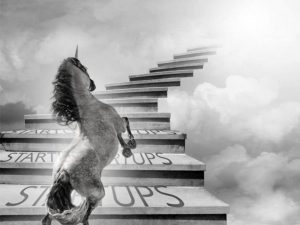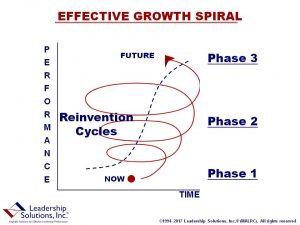by Peter A. Arthur-Smith, Leadership Solutions, Inc.®
“It’s not about systems change; it’s about leadership growth.”
 |
Lots of articles have been written about successful start-ups in Silicon Valley and elsewhere and how they transformed into major enterprises – Google, Facebook, Uber, Amazon, Whole Foods, among others. Examples are given where Sergey Brin and his start-up partner stepped aside to allow Eric Schmidt to run Google for a number of years. Also, how Mark Zuckerberg hired Sheryl Sandberg as his Chief Operating Officer, to “rein-in Facebook’s freewheeling, decentralized culture.” All in the name of management: that force for planning, organizing, directing and controlling.
While in many ways this appears to make sense; overdone it is a potential step their organization will never recover from. Ever since Frederick Taylor made his mark in the 1920s with a number of industrial companies, where efficiency and organization planning
were his panacea; we have remained in the grips of his industrial age philosophy. It has become the permanent playbook of banks, stock markets, economists and business schools. Except that we’re no longer in the industrial age; we’re now in the knowledge age…or possibly the imagination age.
Done right, it would appear that most successful organizations position themselves to go from start-up to a major force within 10 years: otherwise known as Unicorns. That happened to Microsoft, Staples, Costco, Google, Facebook, Home Depot and a number of others. This is likely to occur even more frequently, if organizations know how to accomplish this feat. It’s even more possible with modern-day’s financing mechanisms. All of these named, fast-growth organizations had three things in common:
- Winning product/service with an electric market message,
- Ability to recruit and energize a growing workforce, and
- Having able leaders with the willingness to learn, grow and adapt.
Items 1) and 2) are written about endlessly, especially regarding those enterprises that do hit the jackpot – but they are the few among as so many that miss the boat entirely… much to the disappointment of their investors and people. Perhaps that’s why the unicorns are so newsworthy? The successful ones work their way through the start-up phase and through the initial growth labyrinth until they find its center. At its center they synergize, catch-fire and take-off, while so many others chug along, falter or go round-in-circles within their labyrinth. They either take an enlightened leadership approach or fall into line with traditional management methods. Wall Street was dumb-founded when Google’s founders initially announced they would not play according to established business conventions.
It’s Item 3) that this writer would like to focus on now, because it’s the secret sauce that really makes an organization take-off. Most business journals have a tough time writing about it, since they don’t seem to understand enlightened leadership. Introducing the right leadership dimension into a fast-growth organization can be done in at least three ways:
- Palace Coup – The founders are ousted and replaced by more experienced executives; although conventional wisdom usually stipulates replacing them with experienced managers… and so the suffocating structuring begins.
- The Google Model – The founders bring in more seasoned executives to run the company for them and so the enterprise moves forward on a more predictable track.
- Leader Growth Model – Entrepreneurs/Executives evolve through three phases, in order to remain at the helm from start-up until it becomes a major enterprise. These are depicted in the adjacent chart, where:
 |
» Phase 1- Nascent-Entrepreneurial – Where founders essentially believe, “I can do it better myself.” They lose their way by trying to be involved in everything and to take the credit for most things. Their plight is not helped by a preference for hiring inexperienced people.
» Phase 2– Transforming Leader – Where founders start becoming leaders with, “I can do it better with others.” This is where they grow to be more collaborative and trusting of their talented people. They involve their key people in decision-making and give them more
latitude. They learn how to share responsibility and the credit, which releases energy into the “go-go” phase.
» Phase 3- Strategic-Visionary Leader – Now the Visionists develop the strategists around them: where those strategists lead business units, have a facilitation role – like finance, human resources, legal, logistics – or a next generation role – like R&D, product development, marketing, and so on. Such strategists share their intentions and resource needs with their Visionary Leader (Visionist) to aid their synergy efforts across their enterprise. Now this Phase 3 leader thinks in terms of, “They can do it better without me.” He/She now gives them full credit.
So now you have it. Conventional wisdom teaches that you need the management expertise to bring structure, install a hierarchy, establish iron-clad controls, exert financial discipline, and have a strategic plan. (NOTE: Strategic plans went out with the ark because they’re cumbersome, usually out-dated before their kick-off, and focus overly much on numbers rather than the enterprise’s people talent.) By continuing to inculcate this management philosophy into your organiz-ation’s entrepreneurial or executive ranks, you have already sealed its fate and will likely become a mediocre success at best. The organization world is littered with such well-managed, “hum-drum” entities.
Perhaps that’s why Eric Schmidt at Google has been somewhat sidelined and Sergey Brin is now back at the helm. Schmidt was likely to continue applying yesterday’s business model to tomorrow’s evolution.
On the other hand, if you wish enlightened leadership to flourish, maybe the Palace Coup or the Google Model is the way to go with replacing or role-modeling. Alternatively, the Leadership Growth Model, where up-coming leaders are willing to observe and burn-the-midnight-oil to learn about decision-clarity, enlightened pathfinding, engaging people at all levels, fundamental team-building, and momentum streamlining, could bring more enduring and exciting possibilities. Such an approach will signal that people talent and progress are much more important than systems expansion and process: leadership versus management.
Where your leadership talent is open to the Leader Growth Model alternative, then it’s likely to approach growth Phases 2 &3 in a smart way and will encourage leadership growth at all levels: to give your organization the depth it needs to handle fast- track growth. When an organization is growing quickly, it generates a lot of organizational heat, much in the same way as rockets do as they reach maximum speed. Leadership depth is then required to hold your enterprise together until it reaches a more mature state. Hence your focus should be more on leadership growth, rather than introduce a truck-load of systems change. Where are you and your organization at these days, relative to your growth intentions – Phase 1, 2 or 3?
To find out more about building the right strategic pathway, talk with:
